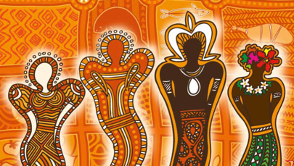General anxiety disorder has surged among Australia's young people particularly after COVID, leading to school refusals.

Current data points to nearly 100,000 children are not in education and many more only tangentially attached and not attending regularly.
Anxiety was the most common group of 12-month mental disorders in Australia, with one in four people experiencing it at some point in their lives.
The annual prevalence of mental ill health in 16 to 24-year-olds had surged 50 percent from 2020-21 — an unprecedented increase in 15 years.
Australia is the third-highest user of antidepressants in the developed world; its use of antidepressants and antipsychotic drugs has increased fourfold since the 1990s.
A rising percentage of youth are addicted to vaping despite the health and environmental impact.

100% of the e-liquids were inaccurately labeled. 100% contained chemicals with unknown effects on respiratory health.
Being cheaper and more socially acceptable than smoking, permitting use where smoking is banned, and being perceived as less harmful to health leads to E-cigarettes’ “pandemic” popularity.
E-cigarettes are likely more harmful than conventional tobacco smoking, including poisoning, immediate toxicity from inhalation, trauma from exploding batteries, and EVALI.
The use of e-cigarettes by non-smokers increases the risk of taking up tobacco smoking an average of three-fold.
In Australia, there are currently 316 medicine shortage alerts listed by the TGA, with 39 listed as critical.

Around 90% of medicines in Australia are imported, leaving it particularly vulnerable to supply chain disruptions.
Warnings about shortages have circulated for more than a decade.
In 2017, the Grattan Institute reported Australia overpays by $500 million per year for prescription drugs; of seven commonly prescribed drugs, Australians paid on average five times the best international price.
Doctors prescribe things based on clinical decisions individually. However, because of the shortages, they cannot prescribe the best course of treatment. Therefore, it will lead to roadblocks in quality clinical care.
Electrified vehicles are a viable way forward in dealing with transport pollution and preventable diseases caused by air pollution, but uptake in Australia is lower than other developed countries

Australia ranked the worst for transport emissions in the developed world in 2018 and has only improved to 3rd to last in 2022
Australia’s transport energy efficiency and emissions rank among the worst in the world. As a result, approximately 3000 people die each year due to preventable diseases associated with exposure to air pollution in Australia.
There has been a relatively steady increase in EV sales is predicted, but with it comes challenges that need to be overcome, such as the continued erosion of fuel tax excise, the need for improved infrastructure for power generation and delivery, as well as transitional arrangements for businesses currently reliant on ICE vehicles.
Increased EV uptake will bring environmental, economic, public health, and national security benefits to Australia.
Urban air pollution is a complex mixture of gases, compounds, and particles that can have direct adverse impacts on human health, such as respiratory diseases, asthma attacks, heart disease, personal irritations, and learning difficulties in children. A complete transition to zero-emission vehicles is expected to reduce the occurrence of these adverse impacts vary significantly
Australians drink 1.91kg of coffee per person per year, but do coffee drinkers understand what it’s doing to their minds and bodies?

(It was) consistently found that higher coffee consumption was significantly associated with reduced brain volume, putting you at risk of brain diseases such as dementia and stroke
Like any food or drink, coffee can be beneficial and harmful depending on the dose. Too much coffee can increase the risk of osteoarthritis, arthropathy, obesity, and brain diseases. 6 cups of coffee a day were considered the upper limit of safe consumption
Understanding the effects and risks associated with coffee intake could have enormous implications for population health, given the worldwide popularity of the drink. However, investigations have used an observational approach where comparisons are made against non-coffee drinkers, which can deliver misleading results.
However, with the strong coffee culture and the ubiquity of cafes in Melbourne, drinking coffee has developed a social aspect. This means more people are drinking more coffee, even when its effects are unwanted.
Perinatal mortality rate among babies born to Indigenous women has remained high and unchanged between 2006 and 2019

In 2015-2019, the perinatal mortality rate among babies born to Indigenous women was 1.7x as high for non-Indigenous women.
Low birthweight attributed to maternal malnutrition was the most significant cause of perinatal mortality to babies born to Indigenous Australian mothers, with smoking as the 2nd most crucial cause.
The Department of Health has set up a Health Plan which places culture at the foundation for Aboriginal and Torres Strait Islander health and well-being as a protective factor across the life course.
There has been an increase in Indigenous mothers attending antenatal care sessions and a decrease in smoking during pregnancy. However, this has not translated to improvements in mortality rates.
Recent articles suggest that there is an issue with the approach organizations have to maintaining a healthy work and life balance.
We’re propelling the burnout epidemic.
Over the years, we have spent over half of our lives dedicating time to one or various workplaces typically chosen based on our interests. Unfortunately, research has shown that many individuals fail to set boundaries with their work and personal life, leading to unnecessary stress, fatigue, high rates of staff turnover, higher rates of absenteeism, staff sicknesses, and overall unhappiness.
It’s common to know that every workplace has a designated first aid person. Workplaces are now implementing mental health procedures to help train certain employees to become mentors for staff that need guidance.
Australians are facing issues with our health services as shortages of beds, staff, treatment and other facilities mean that treating patients is getting to breaking point.
Primary care is in the worst shape since Medicare began
Since 2013 the government has cut a large amount of funding that goes towards Medicare health services, making it difficult for individuals to seek help as there is a cost barrier to seeing a General Practitioner.
In the past two years, there has been an increase in the demand for hospitals and ambulances around Australia for minor assessments that GPs should consolidate. However, research findings suggest multiple problems as hospitals have limited resources, from inadequate equipment, beds, and staff shortages. Due to this, emergency services have significant wait times to provide care to any patient, regardless of severity.
There is a significant increase in number of deaths caused from road accidents that occur all over the world.
There are 1.35 million deaths each year from road accidents
Over the past few years, there has been a recorded increase in the number of accidents on our roads. One of the leading incidents shows that children are more likely to be involved in a road accident than any other facile incident.


Recent Comments